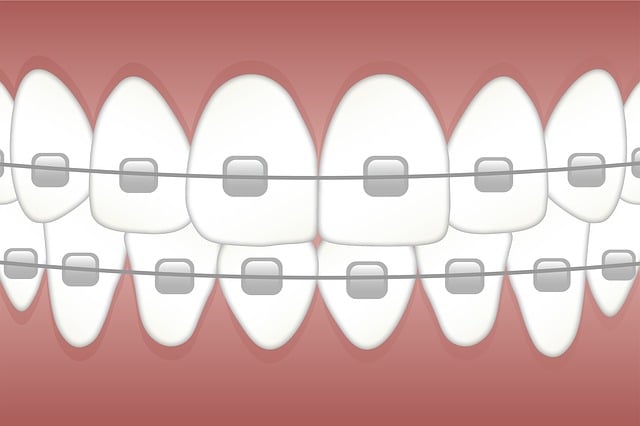Dental malpractice insurance is a crucial safety measure for dentists, protecting them from financial losses and legal repercussions due to treatment errors or negligence. It covers risks like misdiagnosis, inappropriate treatments, medication mishaps, equipment failures, and lack of informed patient consent, which can lead to patient harm and lawsuits. Comprehensive dental malpractice insurance provides financial coverage, peace of mind, and compliance with regulations, enabling dentists to focus on delivering quality care without worry. Key coverages include damages, legal fees, and defense costs up to policy limits, with specific areas like incorrect diagnoses and lack of informed consent protected. Selecting an appropriate insurer specializing in dental coverage is essential for tailored policies and responsive claims handling. Policies have exclusions and limitations, such as intentional acts and certain types of damages, so thorough review is crucial to understand protection and potential gaps.
In the dynamic field of dentistry, ensuring comprehensive protection against potential risks is paramount. This article explores tailored malpractice coverage designed specifically for dentists, addressing critical aspects of risk management. We delve into the unique challenges and potential claims within the dental profession, emphasizing the significance of specialized dental malpractice insurance. By examining key coverage elements, selection criteria, common exclusions, and real-world case studies, this guide equips dental professionals with essential knowledge to navigate and mitigate risks effectively.
- Understanding Dental Malpractice: Risks and Potential Claims
- The Importance of Specialized Dental Malpractice Insurance
- Key Coverage Elements in Dental Malpractice Policies
- How to Choose the Right Dental Malpractice Insurance Provider
- Common Exclusions and Limitations in Dental Malpractice Insurance
- Case Studies: Real-World Examples of Dental Malpractice Claims
Understanding Dental Malpractice: Risks and Potential Claims

Dental malpractice insurance is a crucial safety net for dentists, protecting them from potential claims and financial losses stemming from negligence or errors in treatment. Understanding the risks associated with dental practice is essential to ensuring adequate coverage. Common areas where dental professionals face liability include misdiagnosis, incorrect treatments, medication errors, equipment malfunctions, and failure to obtain informed consent from patients.
Each of these scenarios can lead to patient harm, resulting in medical malpractice claims. For instance, a dentist who fails to diagnose an oral condition properly may be sued if the delay in treatment causes further complications. Similarly, administering the wrong medication or dosage can result in significant injuries, leading patients to pursue legal action. By securing comprehensive dental malpractice insurance, practitioners can safeguard their assets and ensure they are financially protected in case of unexpected claims.
The Importance of Specialized Dental Malpractice Insurance

In the competitive and high-stakes world of dentistry, specialized dental malpractice insurance is not just a consideration—it’s an essential pillar for any successful dental practice. This tailored coverage plays a crucial role in safeguarding dentists from potential financial and legal pitfalls associated with medical errors or negligence. With every dental procedure, there exists a risk of complications, misdiagnoses, or treatment mishaps that could lead to patient harm and subsequent lawsuits. Specialized dental malpractice insurance acts as a shield, providing financial protection against these claims, allowing dentists to focus on delivering quality care without the constant burden of liability worries.
Beyond financial protection, this niche insurance offers peace of mind and resilience in the face of evolving legal landscapes and increasing patient expectations. Dental practices are increasingly held to higher standards, with regulations and guidelines constantly updating. Specialized dental malpractice coverage keeps up with these changes, ensuring dentists remain compliant and protected against potential breaches that could result in costly litigation. It’s a strategic investment that reflects the dedication to excellence and patient safety at the heart of every dental professional’s practice.
Key Coverage Elements in Dental Malpractice Policies

Dental malpractice insurance policies are designed to protect dentists from potential financial risks and legal liabilities arising from negligence during dental procedures. Key coverage elements typically include compensation for damages awarded in lawsuits, up to the policy limits, as well as legal fees and costs associated with defense against claims. This protection is essential given the intricate nature of dental work, which involves intricate procedures and precision instruments that carry inherent risks.
Specific coverage areas within dental malpractice policies may extend to incidents like incorrect diagnoses, improper treatment planning, mistakes in anesthesia administration, or failure to obtain informed consent. Policies also often include provisions for emergency care, ensuring dentists are protected when providing urgent treatment. Additionally, many policies offer options for additional coverage, such as professional liability and general liability, to provide comprehensive protection against various claims that may arise in a dental practice setting.
How to Choose the Right Dental Malpractice Insurance Provider

Choosing the right dental malpractice insurance provider is a crucial step in protecting your practice and ensuring peace of mind. Look for insurers that specialize in dental coverage, as they will have a deeper understanding of the unique risks faced by dentists. This expertise translates to more tailored policies and better claims handling.
Consider factors like financial stability, policy flexibility, and customer reviews when making your selection. It’s also essential to evaluate the scope of coverage offered, including cap limits, defense fees, and any exclusions or limitations. Opting for a provider that offers comprehensive coverage and responsive service can make all the difference in managing potential malpractice claims effectively.
Common Exclusions and Limitations in Dental Malpractice Insurance

Dental malpractice insurance is designed to protect dentists from financial loss in the event of a lawsuit due to alleged negligence or substandard care. However, it’s crucial to understand that these policies come with certain exclusions and limitations. Common exclusions include intentional acts, willful ignorance, or care provided outside the scope of practice. These clauses safeguard insurers from covering deliberate misconduct or situations where dentists knowingly deviate from accepted standards of care.
In addition to these core exclusions, dental malpractice insurance policies may have limitations on coverage amounts, liability periods, and specific types of damages that are payable. For instance, some policies might cap the total payout for a single incident or limit compensation for specific losses like punitive damages. Such limitations vary among insurers and policy types, so dentists should carefully review their policies to comprehend the extent of protection they receive and where it may fall short.
Case Studies: Real-World Examples of Dental Malpractice Claims

In the realm of dentistry, where precision and patience are paramount, even well-intentioned procedures can sometimes lead to unforeseen complications. This is when dental malpractice insurance steps in as a crucial safety net for practitioners. Case studies from real-world scenarios highlight the diverse nature of dental malpractice claims. For instance, a dentist who performs a root canal might face liability if they fail to properly identify or treat an existing infection, leading to patient discomfort and potential further complications. Similarly, misjudging the extent of tooth extraction can result in damage to surrounding structures, such as nerves or blood vessels, causing long-term sensory or mobility issues for the patient.
These examples underscore the importance of comprehensive dental malpractice insurance, which protects dentists from significant financial burdens and reputational damage that can arise from such incidents. By understanding real-world case studies, dental professionals can better appreciate the risks associated with their practice and make informed decisions regarding their coverage, ensuring they are adequately protected in the event of unexpected challenges.
